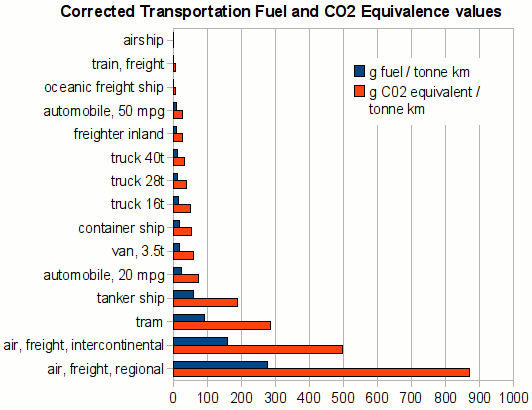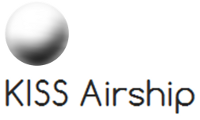Environment
Society today is totally reliant on transport. For example, most American cities have no more than a 3 day supply of food. A failure anywhere in the long supply lines would result in hardship and even death. However, transport in its current form – be it road, rail, air or sea – entails a plethora of issues for the environment and mankind in general.
Airships – being inherently safe and fuel efficient – could help to mitigate some of mankind’s most serious problems: ecological challenges and traffic fatalities.
Pollution, land use, climate change
Up to 10 % of the inhabitable land mass Is covered with transport related infrastructure: roads, ports, airports or waterways. This infrastructure often negatively impacts the environment and requires massive investments to build and maintain.
A conventional interstate highway costs more than $ 2 million per kilometer on average. And every couple of years these roads have to be re-paved especially due to the truck freight market. A regularly loaded truck imposes as much wear and tear on a road as some 3,500 to 4,000 cars,
When it comes to pollution, most of the issues can be attributed to the almost exclusive use of fossil fuels – oil in particular. Oil is so critical to modern economies that a small shortage in supply causes massive increases in cost. The most optimistic scenarios put serious oil shortages at less than a decade away. No alternative technologies exist to manage supply chains – or indeed to fuel alternatives, and we know that building alternatives will take massive supplies of energy (from oil because that is what we have) and time. Both are likely to be in short supply in the near future. We need to be constructing alternatives now to have any hope of avoiding a collapse in society caused by a failure of transportation systems. When we look for alternatives, we must take into account time to produce, the energy cost of the systems, and ideally any solutions should result in a reduction in the rate of rapid increase in CO2 and other greenhouse gases we are producing. Fortunately these equations tend to be interlinked.
When we examine our transport modes in terms of energy efficiency, we perform the calculations based on direct fuel efficiency or the amount of fuel to transport a standard mass a standard distance (technically sfc or specific fuel consumption). Today this is measured in grams of fuel per tonne km. The same calculation allows us to calculate, for carbon based fuels, the amount of greenhouse gas produced per tonne km.
Here is a graph reflecting transport processes ordered by grammes per tonne kilometer.

Airships – if available in large numbers – offer the opportunity to move much of the current freight traffic from current modes of ground based transport to the third dimension in a very fuel-efficient way. The airspace from ground level up to 2000 meters is heavily underutilized, there is nothing flying except a couple of sports pilots, free balloons and helicopters. And the best part, this infrastructure is readily available at almost no cost.
Traffic fatalities
Accoring to the “World report on road traffic injury prevention” by World Bank and the World Health Organization, the global death toll of road traffic fatalities has already exceeded 1.2 million per year and is on course to triple to 3.6 million per year by 2030.
The “Roads Kill” initiative of the Pulitzer Center states that In the developing world, where this pandemic has hit hardest, it will become the fifth leading cause of death, leapfrogging past HIV/AIDS, malaria, tuberculosis and other familiar killers, according to the most recent Global Burden of Disease study.
Developing countries have 50 percent of the world’s road traffic but 90 percent of the traffic fatalities,” said Stein Lundebye, a road safety pioneer and former leader of the World Bank’s road safety task force. “It’s a big public health problem, a big socio-economic problem.”
It’s also a “poverty-inducing problem,” according to Jose Luis Irigoyen, director for Transport, Water, and Information and Communication Technologies for the World Bank. “It’s costing on average between 1 and 3 percent of GDP” in low- and middle-income countries, he says, an amount that can offset the billions of dollars in aid money that these countries currently receive.
Airships could bring down the number of traffic fatalities significantly. They occupy the third dimension, where there is not pedestrian or general traffic and are inherently safe. Even if an airship loses engine power, it still floats like a balloon and can be horizontally steered by releasing lifting gas or ballast.
The following info map has been generously provided by the Pulitzer Center for free distribution:
